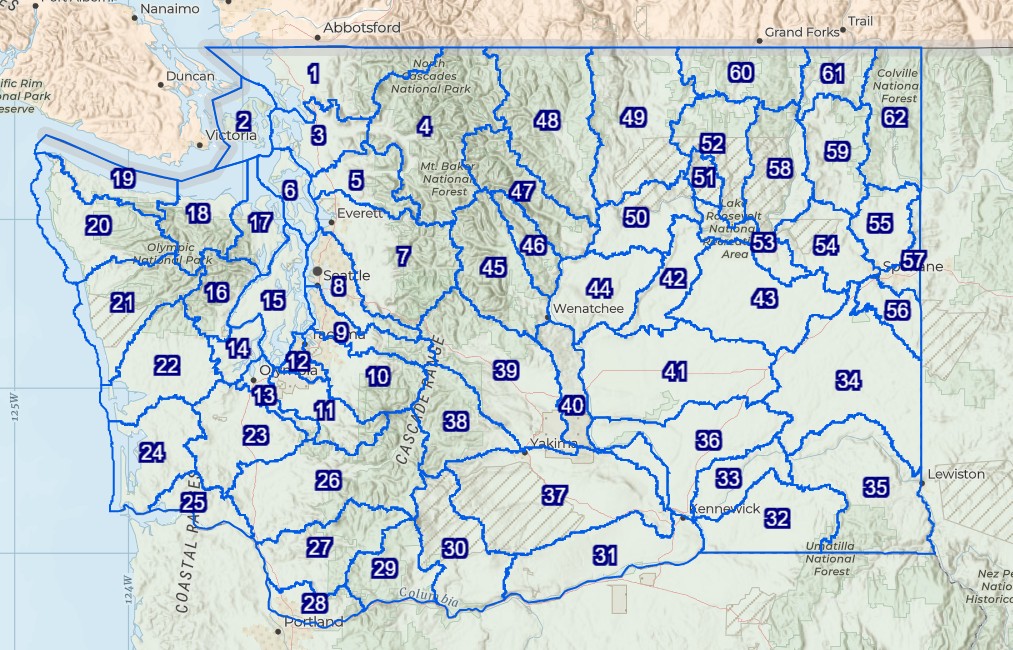Get to Know Your Watershed
Water quality throughout our region is a reflection of anthropogenic land use. We collectively bare a responsibility to take care of our watersheds, so getting to know your own watershed is key to understanding how you can be the best steward you can.
What Is A Watershed?
Discover Your ‘Watershed Address’
The state of Washington is divided into 62 separate WRIAs, the boundaries of which are defined by watersheds. Washington’s 62 WRIAs were created as a result of the Water Resources Act of 1971 and updated with the adoption of the Watershed Management Act of 1998 which established the Watershed Planning Program. The purpose of the act was to encourage the development of comprehensive, long-range watershed planning through voluntary collaborative efforts at the watershed level.
Using this tool from the Department of Ecology, enter your street address to see which WRIA you belong to.
Paddle Your Watershed


The EPA’s Role in Enforcing the Clean Water Act
The Clean Water Act (CWA) of 1972 was passed in direct response to increasing public concern for the environment and the inaugural celebration of Earth Day. Serving as a major revision of the Federal Water Pollution Control Act of 1948 which had proven woefully ineffective (see: Cuyahoga River fires and the 1969 Santa Barbara Oil Spill), the goal of the CWA was, and is, to restore and maintain clean and healthy waters. The CWA established the basic structure for regulating discharges of pollutants into the waters of the United States and regulating quality standards for surface waters.
Responsible for monitoring and enforcement under the CWA, the Environmental Protection Agency (EPA) has implemented pollution control programs and developed national water quality criteria recommendations for pollutants in surface waters. The EPA works with its federal, state and tribal regulatory partners through a comprehensive Clean Water Act compliance monitoring program to protect human health and the environment by ensuring that the regulated community obeys environmental laws/regulations through on-site visits by qualified inspectors, and a review of the information EPA or a state/tribe requires to be submitted. While significant improvements have been made in public health and environmental protection as a result of the EPA’s enforcement of the CWA, the CWA still faces challenges related to nonpoint-source pollution, such as motor oil in rainwater runoff; sanitary sewer overflows; continued water-treatment infrastructure improvements; and municipal sewage sludge use and disposal.

